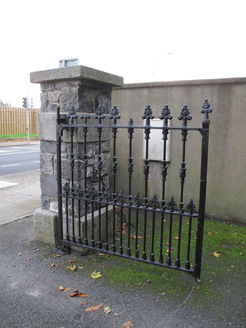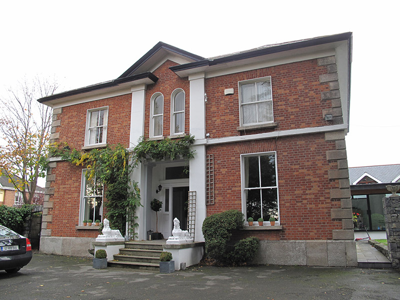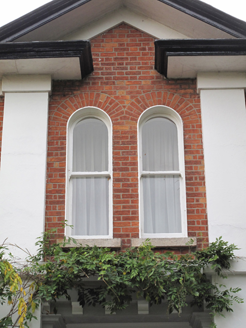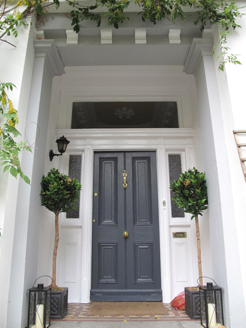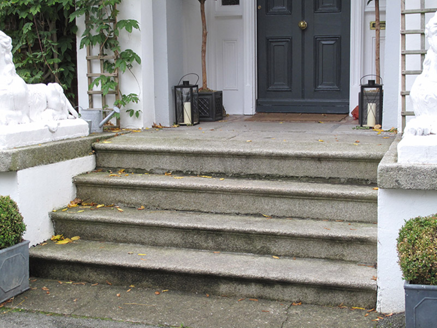Survey Data
Reg No
50030289
Rating
Regional
Categories of Special Interest
Architectural
Original Use
House
In Use As
House
Date
1860 - 1900
Coordinates
319021, 236852
Date Recorded
29/10/2014
Date Updated
--/--/--
Description
Detached three-bay two-storey house, built c. 1880, having giant order pilasters giving sense of central shallow pedimented breakfront to front (south-east) elevation. Two-storey return and recent extension to rear. U-plan hipped slate roof with rendered chimneystacks, cast-iron rainwater goods, moulded render eaves course to front, open bed to pediment. Red brick, laid in Flemish bond, to front, smooth render pilasters flanking central breakfront, smooth render stringcourse, granite plinth course and quoins, roughcast rendered walls to side elevations, having smooth render eaves course and plinth course, and lined-and-ruled render to return to rear. Square-headed window openings throughout, with granite sills, raised render reveals to front, two-over-two pane timber sliding sash windows, some grilles to south-west elevation, some windows blocked to north-east elevation, pair of round-headed window openings to first floor to front of breakfront having one-over-one pane timber sliding sash windows. Square-headed door opening to recessed porch, flanked by pilasters, consoles to lintel over, timber panelled door flanked by panelled pilasters and sidelights, plain overlight, tiled platform and nosed granite steps flanked by rendered walls having granite copings. Set back from road in mature gardens, accessed via tree-lined avenue. Site enclosed by red brick boundary wall, rendered to interior, and recent steel railings. Pair of recent square-plan piers with granite caps flanking double-leaf cast-iron gate to south-east of site.
Appraisal
This is a classically Victorian middle-sized house such as was often built on the edges of towns. Its form and detailing show that it was designed by the same architect as that of Auburn House on the same road. The standard of its design, quality of its materials and retention of much original fabric makes it a building of significant architectural interest. Granite and render detailing are used to good effect to enliven the red brick façade, providing a visual and textural contrast. The render and timber details to the doorway add classical elegance and the varied shapes of window openings add interest, the round-headed paired openings to the front in particular suggestive of Victorian domestic architecture. The route of the original Howth Road was changed when the Great Northern Railway was constructed, and thus would only have risen to prominence as a suburban thoroughfare in the latter decades of the nineteenth century, when substantial houses such as this began to be constructed. The northern suburbs were slower to develop than those to the south, and this house is representative of the growing popularity of this area for residential construction in the nineteenth century.
